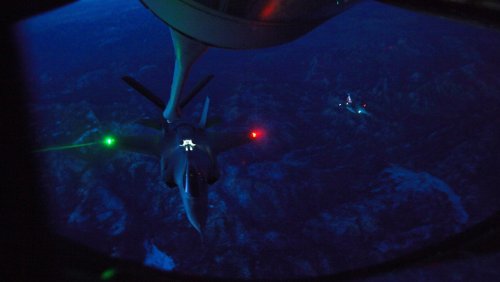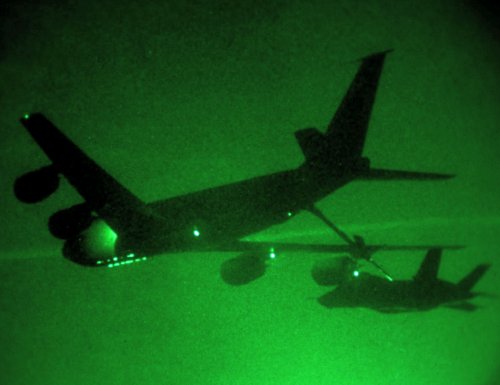(Reuters) - The U.S. government now projects that the total cost to develop, buy and operate the Lockheed Martin Corp F-35 Joint Strike Fighter will be $1.45 trillion over the next 50-plus years, according to a Pentagon document obtained by Reuters.
The Pentagon's latest, staggering estimate of the lifetime cost of the F-35 -- its most expensive weapons program -- is up from about $1 trillion a year ago, and includes inflation.
While inflation accounts for more than one-third of the projected F-35 operating costs, military officials and industry executives were quick to point out that it is nearly impossible to predict inflation over the next half-century.
They also argue that no other weapons program's costs have been calculated over such a long period, and that even shorter-term cost projections for other aircraft do not include the cost of modernization programs and upgrades.
The new cost estimate reflects the Pentagon's proposal to postpone orders for 179 planes for five years, a move that U.S. official say will save $15.1 billion through 2017, and should avert costly retrofits if further problems arise during testing of the new fighter, which is only about 20 percent complete.
The Pentagon still plans to buy 2,443 of the new radar-evading, supersonic warplanes, plus 14 development aircraft, in the coming decades, although Air Force Secretary Michael Donley last week warned that further technical problems or cost increases could eat away at those numbers. The new estimate, based on calculations made by the Cost Assessment Program Evaluation (CAPE) office, includes operating and maintenance costs of $1.11 trillion, including inflation, and development and procurement costs of $332 billion. The Government Accountability Office last week projected it would cost $397 billion to develop and buy the planes, up from its earlier forecast of $382 billion. The Pentagon office that runs the F-35 program office has a lower estimate for lifetime costs, although it is still around $1 trillion, according to two sources familiar with the estimates. Both industry and government have put a huge emphasis on reducing operating costs and keeping the plane affordable. The new estimates are part of a revised F-35 baseline dated March 26 that will be sent to Congress on Thursday.
AVERAGE COST $135 MLN PER F-35
The new baseline forecasts the average cost of the F-35 fighter, including research and development (R&D) and inflation, at $135 million per plane, plus an additional $26 million for the F135 engine built by Pratt & Whitney, a unit of United Technologies Corp. In 2012 dollars, the average cost of each single-seat, single-engine plane, including R&D, would be $112.5 million, plus $22 million for the engine. This is the first year that the government has separated out the cost of the plane and the engine, and comparison figures were not immediately available. Lockheed Martin has said the average cost of the plane will be around $65 million to $70 million, based on 2010 dollars. Lockheed Martin declined comment on the new estimate, saying it had not yet received the Pentagon's latest report.
Lockheed spokesman Joe LaMarca said the company still believed the new fighter jet would cost the same or less to operate and maintain than the seven legacy warplanes it will replace, while offering far greater capabilities.
INCREASES DUE TO GOVERNMENT CHANGES
Defense analyst Loren Thompson said three quarters of the cost increases on the F-35 program were linked to government changes in the scope of the program, and the way it was estimating costs. For instance, he said, the Pentagon initially planned to station the plane at 33 bases, but later changed the number to 49. It initially calculated operating costs over 30 years, but then chose a longer timeframe of 50 years, he said. "The program costs appear to be rising much faster than they actually are because the government keeps changing how it calculates things," Thompson said. The Pentagon's proposal to postpone buying 179 planes for five years added $60 billion to the operations and support cost of the program, since those planes will now be delivered in later years when inflation is higher. The push also added two years to the duration of the program, according to an internal Lockheed calculation obtained by Reuters.
But Winslow Wheeler, a critic of the program, predicts cost growth on the program will be even greater than estimated by the Pentagon, given the complexity of the F-35 fighter.
Lockheed is developing three variants of the new plane for the U.S. military and eight partner countries: Britain,
Australia, Canada, Italy, Turkey, Denmark, Norway, Australia and the Netherlands. They now plan to buy a combined total of 697 planes, down from 730 in the previous Pentagon estimate. (Reporting by Andrea Shalal-Esa; Editing by
Anthony Boadle)


